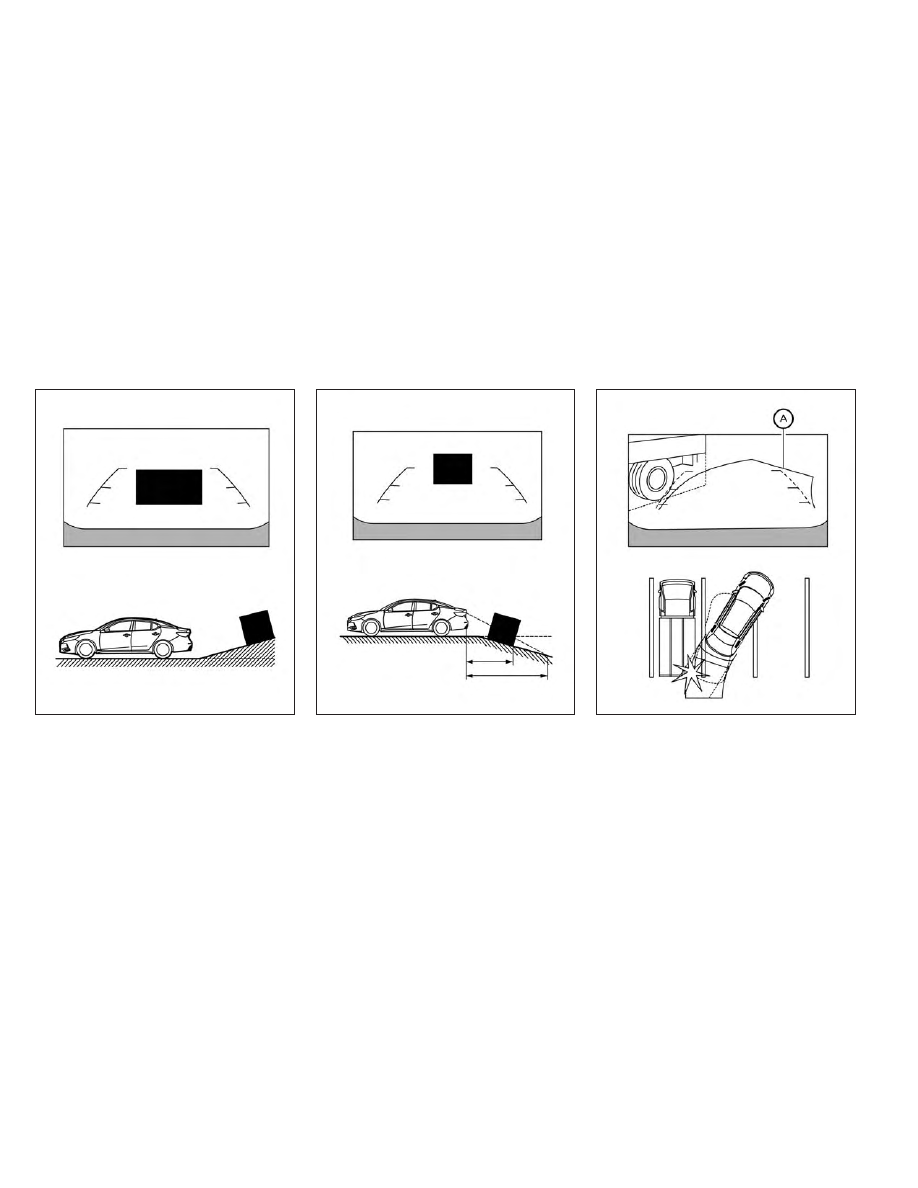Nissan Sentra (2022 year). Manual in english - page 14

Backing up on a steep uphill
When backing up the vehicle up a hill, the
distance guide lines and the vehicle width
guide lines are shown closer than the ac-
tual distance. Note that any object on the
hill is further than it appears on the
monitor.
Backing up on a steep downhill
When backing up the vehicle down a hill,
the distance guide lines and the vehicle
width guide lines are shown farther than
the actual distance. Note that any object
on the hill is closer than it appears on the
monitor.
Backing up near a projecting
object
The predicted course lines
O
A
do not touch
the object in the display. However, the ve-
hicle may hit the object if it projects over
the actual backing up course.
LHA5322
LHA5323
LHA4995
4-20
Monitor, climate, audio, phone and voice recognition systems